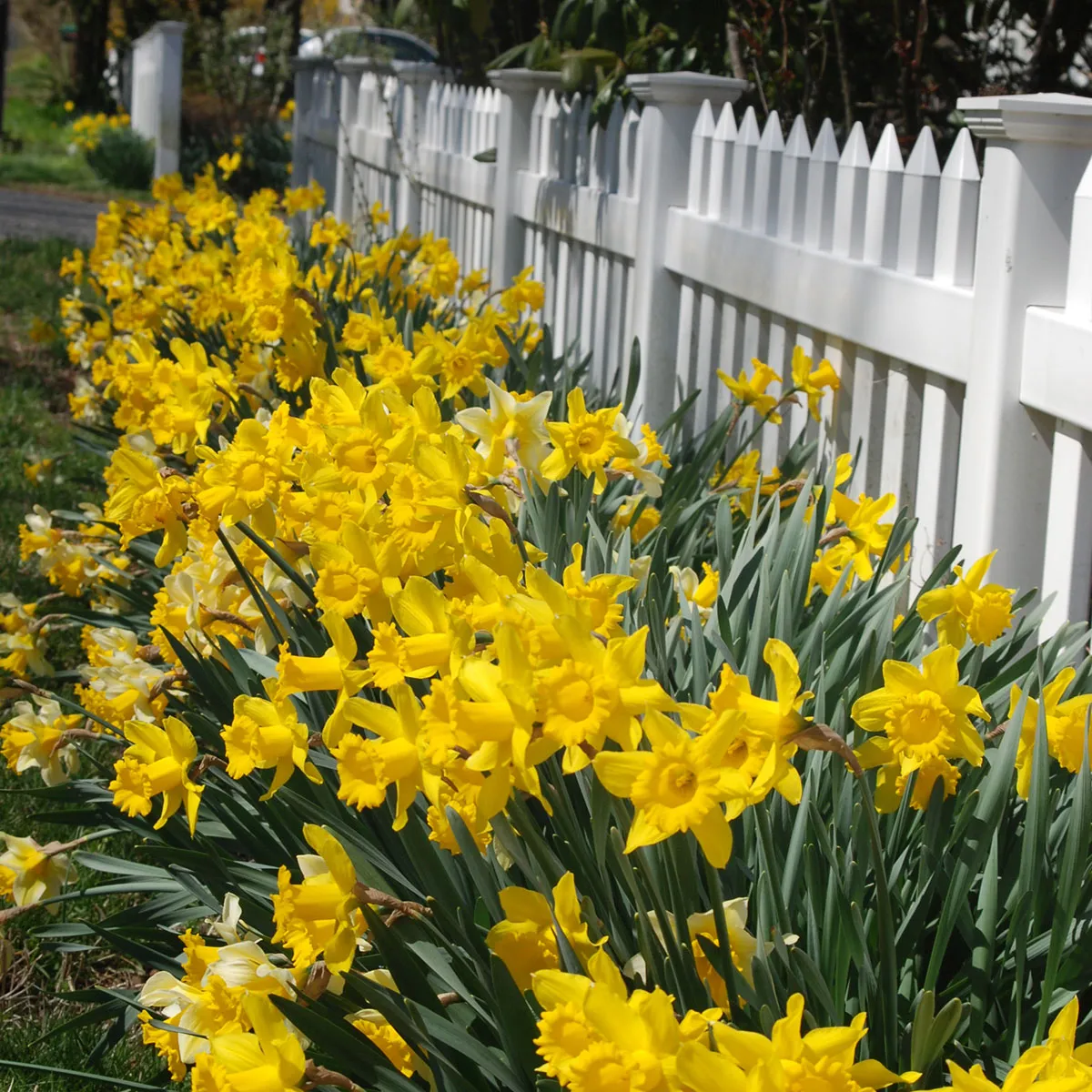
Fall is almost HERE, and if you’re like me, that gardening itch isn’t going away anytime soon! Last month, we explored how to boost your home’s curb appeal with porch decor ideas, and today, we’re focusing on smart and budget-friendly gardening projects to enhance your outdoor spaces. The cooler temperatures make fall the perfect time to invest in your garden, adding value to your home without breaking the bank. As the humidity drops, I love spending time in my yard here in the foothills of North Georgia. The air starts to change from warm and sweet to crisp and pine-scented—a true sign that autumn has arrived. This time of year always reminds me of cozy nights around the fire pit, roasting s'mores, and enjoying all the delicious football season eats.
One of my cherished childhood memories is picking daffodils with my Mama at an old, abandoned farm down the road. Every spring, that place would burst into bloom just in time for my birthday. Even now, seeing daffodils brings back those special moments. This fall, I’m planning to gather the kids for some last-minute daffodil planting to ensure a colorful spring display. Not only will these flowers add curb appeal, but they’ll also increase the long-term value in our yard.
Daffodil facts:
Daffodils are perennial bulbs, returning year after year.
They are resistant to deer and rabbits.
Thrive in various conditions, including shady areas.
Best planting time: September to November, when nighttime temperatures drop to 45°F or lower.
Can be planted in containers; use pots at least 12 inches deep with good drainage.
Allowing foliage to die back naturally after blooming to help bulbs store energy for the growing season.
So, whether you’re looking to improve your home’s curb appeal or simply enjoy the therapeutic benefits of gardening, fall is the perfect time to start planting. Create new memories with your loved ones, and who knows—this could become one of your favorite seasonal traditions!
This post contains helpful affiliate links and I may receive a commission from purchases made at no additional cost to you. These are products I have personally tried and recommend.
Top tips for planting day and care:
Purchase high quality bulbs. They will bloom bigger and more prolific. I ordered mine and had them delivered the same week. There are tons of varieties online to suit lots of growing conditions, and more colors than you would think, like these, or these, or these.
Make sure you know your area’s frost date. For all daffodils, fall planting is preferred up until two weeks before your region’s frost date. For some places this can be up until December. For those in warmer climates like zone 9-10, you can often find pre-chilled bulbs too.

Map courtesy of Gardeninminutes.com
Daffodils don’t like wet feet. When planning your display, hillsides, raised beds, pots/containers or in ground will have success as long as there is adequate drainage.
Plant pointy side up. The roots grow down and are located on the plump end of the bulb. Space them 3”-6” apart depending on the size of your bulb to give each one room to spread out and prevent overcrowding over time. Also plant at a depth that is twice the size of the bulb. For example, if your bulb measures 2 inches, plant at a depth of 4 inches. This and this make it much easier to dig holes.
Plant in mass for the biggest impact! Whether you are going with a single variety or a curated mix of different blooms, these guys look best in a crowd.
*Bonus tip: if you’re planting different varieties together, it extends the bloom time to the max. Each variety blooms independent of the others, so the more variety you add, the longer the blooms will be on display.
Create just the right look. Planting style doesn’t matter with these naturalizing bulbs. You can literally scatter them for a very organic, like “they just planted themselves” look or stack them like little solders all in rows.
Feed, divide, and conquer. Daffodils appreciate feeding of bone meal after flowering. It will help to nourish the bulbs to multiply into clumps and produce big blooms next spring. It will take a few years, but the clumps can become quite large. If you find your daffodils are getting too dense you can dig them up, divide the clumps, and replant. After the foliage tops begin to dry is the best time to do this. If they are staying put and all the foliage has turned from green to brown, you can cut them back and await the next show-stopping display.
Happy Fall Gardening Y'all!

Kiley Hope, REALTOR (& garden lover)
Residential Specialist, Funari Realty
3704 Village Way, Suite A
Braselton, Georgia 30517














Comments